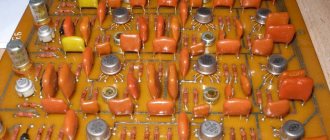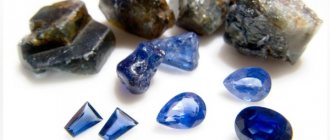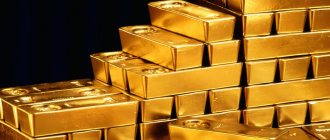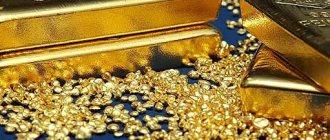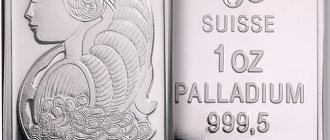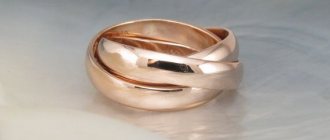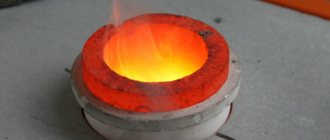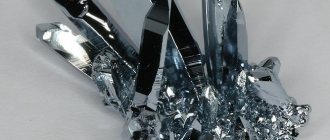What radio components contain
Precious metals were used in the production of Soviet devices, since at that time the market was focused on high quality.
Noble metals are resistant to adverse environmental conditions, do not wear out and do not oxidize. In what kind of radio components gold, palladium and platinum can be found, you can guess by their importance in devices
Approximate percentage of palladium in radio components.
| Item name | Palladium percentage (%) |
| Spirals and windings of flux chords for markings KSP, KSU, KSD and potentiometers PTP-2 | 80 |
| KSP relay contacts, RES relays 7 and 8 | 78 |
| Capacitors PPML IM | 60 |
| Contacts from resistors SP5-14 22 Ohm and SP5-14 33 Ohm | 58 |
| Pins of the contact group of resistors SP5-17-10 Ohm, SP3-37 | 28 |
| Roller winding and contact group of resistors, PP3 from 40 to 47 | 20 |
| Contact areas, SP5 circles | 18 |
Which radio components contain the most Pd?
- Radio technical scrap of military electronic equipment.
- Palladium capacitors (usually green) marked KM.
- Metal core resistors.
- Oscilloscope wire types C114 - 125, C1-9-9.
- Switch contacts.
Most semiconductor devices contain platinum group metals, but in quantities that are insignificant for refining.
Where else can you find it?
Palladium can be extracted from computer parts. The same principle applies here - the older the unit, the greater the chance of getting a good metal yield.
Modern microcircuits contain a Pt-Pd alloy, but the yield of palladium from these parts will be insignificant. But it’s worth looking for pioneer chips.
Today, palladium is used as a catalyst in air purification systems from exhaust gases, and in the USSR it was used in gas mask filters of the DP-2 type
Preface
The goals, basic principles and basic procedure for carrying out work on interstate standardization are established in GOST 1.0-2015 “Interstate standardization system. Basic provisions" and GOST 1.2-2015 "Interstate standardization system. Interstate standards. rules and recommendations for interstate standardization. Rules for development and adoption. updates and cancellations"
Standard information
1 DEVELOPED by the Interstate Technical Committee for Standardization MTK 102 “Platinum Metals”. Open Joint Stock Company "Krastsvetmet"
2 INTRODUCED by the Federal Agency for Technical Regulation and Metrology
3 ADOPTED by the Interstate Council for Standardization, Metrology and Certification (protocol dated February 28, 2021 No. 106-P)
The following voted for adoption:
| Short name of the country according to MK (ISO 316“) 004-97 | Code of the country according to MK (ISO 31vv) 004-97 | Abbreviated name of the national standardization body |
| Belarus | BY | State Standard of the Republic of Belarus |
| Kyrgyzstan | KG | Kyrgyzstandard |
| Russia | RU | Rossgandart |
| Tajikistan | T.J. | Tajshsgandart |
4 By Order of the Federal Agency for Technical Regulation and Metrology dated November 9, 2021 Nc 972-st, the interstate standard GOST 31291-2018 was put into effect as a national standard of the Russian Federation from December 1, 2021.
5 INSTEAD GOST 31291—2005
Information about changes to this standard is published in the annual information index “National Standards”, and the text of changes and amendments is published in the monthly information index “National Standards”. In case of revision (replacement) or cancellation of this standard, the corresponding notice will be published in the monthly information index “National Standards”. Relevant information, notices and texts are also posted in the public information system - on the official website of the Federal Agency for Technical Regulation and Metrology on the Internet (www.gost.ni)
© Staydarinform. decor. 2018
In the Russian Federation, this standard cannot be fully or partially reproduced, replicated and distributed as an official publication without permission from the Federal Agency for Technical Regulation and Metrology
Gold refining methods
Buying gold in Penza
Methods for purifying precious metals are divided into:
- chemical (based on the interaction of substances, there are dry and wet);
- electrochemical (electrolysis).
Dry
When talking about the dry method of gold purification, they mean the Miller method. It is used only in industrial conditions due to the toxicity and corrosiveness of chlorine and its compounds, which are released in excess during the reaction.
The essence of the method: chlorine gas is passed through the crushed mass of the processed substance. Compounds of base metals with chlorine are volatile and are removed from the alloy, increasing the gold purity.
Miller's method is effective due to the fact that noble metals react with chlorine last (zinc and iron are removed first, gold and platinum are removed last). Its advantages:
- it is inexpensive;
- does not require large areas to accommodate equipment;
- short - takes several hours;
- removes almost all alloy, increasing the gold content in the alloy to 99.5–99.9%.
The refining process takes place in a crucible (a refractory melting tank), into which chlorine enters through a pipe. Excess components are removed from the mixture, and silver chloride rises to the surface of the alloy - this makes it possible to further separate the noble metals from each other. Miller's method helps to obtain gold from both a multicomponent alloy and an alloy with silver.
Wet
It is convenient to separate the noble metal from the alloy by dissolving either the metal itself or impurities.
The most popular refining method involves reacting scrap with aqua regia (a mixture of nitric and hydrochloric acids - one of the few compounds that dissolves gold). The solution is evaporated and the gold is precipitated using iron sulfate (also suitable for reduction from chloride), oxalic acid, sodium pyrosulfite or hydrazine.
If the reduction reaction is carried out correctly, the loss of pure substance at the output will be minimal, and the sample will reach 999.
There is a way to dissolve gold using Lugol's solution - a combination of potassium and iodine.
Quarting is also used (from the Latin quarta - fourth) - alloying gold in a ratio of 1:3 with another metal (brass, zinc, copper), which is subsequently dissolved in nitric acid. Impurities will not dissolve qualitatively if their content is less than ¾ of the volume, so the semi-finished product is quartted. Theoretically, you can try this at home, but be aware that when dissolved, it releases very poisonous nitric oxide.
If you have gold in solution, it can be easily refined with stannous chloride powder. A day after the start of the process, the gold will settle to the bottom of the container in which you left it. The good thing about the method with tin chloride is that when using it, the operator’s body is not endangered, as when working with volatile chlorides or acid.
Electrolytic
Electrolysis involves the separation of the constituent components of the alloy on the electrodes as a result of the passage of electric current through the electrolyte. During refining, the anode (electrode with a positive potential) is a gold-containing alloy, and the cathode (electrode with a negative potential) is thin rolled gold (999) tin. An electrolyte is a solution of gold chloride and an acid that dissolves the anode.
The initial anode sample is a minimum of 900. The process takes place in small porcelain baths (~ 25 l) installed on water baths to maintain a temperature of 50–60 ° C. Gold particles settle in layers on the cathode. After the process is completed, the anode sludge is sent for further processing: the silver is separated and melted into anodes for silver electrolysis.
What methods of affining can be carried out at home?
Of course, you cannot conduct an experiment with chlorine at home. But you can try to extract gold from scrap or computer waste using tin chloride and acids. Skilled alchemists can use the electrolytic method. But don't forget about safety precautions!
Examples of refining
How to solder silver
Refining is carried out using various methods. To highlight the material at home, the best choice would be:
- electrolysis,
- sequential chemical reactions.
Electrolysis requires highly concentrated sulfuric acid. It replaces the electrolyte. Lead is used as the cathode, and the anode is an electrical component from which the required material is released. During the procedure, the original copper and brass alloys remain intact. After electrolysis, palladium with various impurities is released. To remove them, the metal is placed in hydrochloric nitric acid.
Before starting the procedure, a voltage of 11-13 volts is applied to a container filled with electrolyte. Exposure to electric current leads to the formation of powder or flakes in the vessel. It is in this form that palladium is released.
Electrolysis is a relatively simple method of producing metal. It is more difficult to extract palladium through a chemical reaction, since, depending on the composition of the alloy, the starting reagents are selected. So, to separate silver and gold you will need:
- nitric and hydrochloric acids, including their mixture,
- ammonia.
It is important to remember that in the process of producing palladium through a chemical reaction, many substances hazardous to the body are released into the surrounding space. Before starting the procedure, it is recommended to wear protective equipment (gloves and a mask) and create conditions for ventilation of the room
Price and reception locations for VYD
Palladium price (ounce, gram) in rubles and dollars online, purchase example
One should immediately make a reservation: on the territory of the Russian Federation, the implementation of VDM is an illegal act (Article 192 of the Criminal Code of the Russian Federation), which carries an administrative penalty (fine). If we are talking about large amounts, then there is a real sentence (up to 5 years). However, the law is not consistent. What does this mean?
The fact is that the article stipulates the priority of the state in terms of purchasing refined precious metals from entities in the event that it (the state) has made investments - that is, it has made advances to structures whose type of activity is the recycling of secondary raw materials.
Regarding “anyone”, it is more advisable to sell VDM to licensed organizations, rather than to various shadow structures: buy-ups, pawn shops, etc. It is the official organizations that will give a fair price.
Speaking about the cost of precious metals, it is worth mentioning the rise in gold prices at the beginning of 2021. However, the joy of investors did not last long - soon the market collapsed, and after gold, quotes for other precious metals fell.
We offer a picture of the current state of prices for precious metals, including refined ones, in the table.
| Metal name | World market price per gram (USD) | Price per gram established by the Central Bank of the Russian Federation (RUB) |
| Gold | 39,92 | 2 234 |
| Silver | 0,58 | 32,49 |
| Platinum | 30,38 | 1700,22 |
| Palladium | 25,62 | 1422,94 |
We described in more detail what the price of refined precious metals is and where they can be donated here.
Reserves and deposits
In its pure form, palladium nuggets cannot be found in nature. Particles of this metal are extracted along with other minerals. There can be more than 30 such compounds in total. By their appearance, grains of palladium can easily be confused with platinum. Some deposits contain both of these metals at the same time, which are mined together. Occasionally veins of palladium intersect with gold.
The main source of the appearance of this metal on planet Earth is cosmic fragments of meteorites. It is in them that a large number of crystals of this precious metal are found.
Nugget of gold (Photo: Instagram / in_sochi)
Gold refining methods
Methods for purifying precious metals are divided into:
- chemical (based on the interaction of substances, there are dry and wet);
- electrochemical (electrolysis).
Dry
When talking about the dry method of gold purification, they mean the Miller method. It is used only in industrial conditions due to the toxicity and corrosiveness of chlorine and its compounds, which are released in excess during the reaction.
The essence of the method: chlorine gas is passed through the crushed mass of the processed substance. Compounds of base metals with chlorine are volatile and are removed from the alloy, increasing the gold purity.
Miller's method is effective due to the fact that noble metals react with chlorine last (zinc and iron are removed first, gold and platinum are removed last). Its advantages:
- it is inexpensive;
- does not require large areas to accommodate equipment;
- short - takes several hours;
- removes almost all alloy, increasing the gold content in the alloy to 99.5–99.9%.
The refining process takes place in a crucible (a refractory melting tank), into which chlorine enters through a pipe. Excess components are removed from the mixture, and silver chloride rises to the surface of the alloy - this makes it possible to further separate the noble metals from each other. Miller's method helps to obtain gold from both a multicomponent alloy and an alloy with silver.
Wet
It is convenient to separate the noble metal from the alloy by dissolving either the metal itself or impurities.
The most popular refining method involves reacting scrap with aqua regia (a mixture of nitric and hydrochloric acids - one of the few compounds that dissolves gold). The solution is evaporated and the gold is precipitated using iron sulfate (also suitable for reduction from chloride), oxalic acid, sodium pyrosulfite or hydrazine.
If the reduction reaction is carried out correctly, the loss of pure substance at the output will be minimal, and the sample will reach 999.
There is a way to dissolve gold using Lugol's solution - a combination of potassium and iodine.
Quarting is also used (from the Latin quarta - fourth) - alloying gold in a ratio of 1:3 with another metal (brass, zinc, copper), which is subsequently dissolved in nitric acid. Impurities will not dissolve qualitatively if their content is less than ¾ of the volume, so the semi-finished product is quartted. Theoretically, you can try this at home, but be aware that when dissolved, it releases very poisonous nitric oxide.
If you have gold in solution, it can be easily refined with stannous chloride powder. A day after the start of the process, the gold will settle to the bottom of the container in which you left it. The good thing about the method with tin chloride is that when using it, the operator’s body is not endangered, as when working with volatile chlorides or acid.
Electrolytic
Electrolysis involves the separation of the constituent components of the alloy on the electrodes as a result of the passage of electric current through the electrolyte. During refining, the anode (electrode with a positive potential) is a gold-containing alloy, and the cathode (electrode with a negative potential) is thin rolled gold (999) tin. An electrolyte is a solution of gold chloride and an acid that dissolves the anode.
The initial anode sample is a minimum of 900. The process takes place in small porcelain baths (~ 25 l) installed on water baths to maintain a temperature of 50–60 ° C. Gold particles settle in layers on the cathode. After the process is completed, the anode sludge is sent for further processing: the silver is separated and melted into anodes for silver electrolysis.
What methods of affining can be carried out at home?
Of course, you cannot conduct an experiment with chlorine at home. But you can try to extract gold from scrap or computer waste using tin chloride and acids. Skilled alchemists can use the electrolytic method. But don't forget about safety precautions!
Physical properties of metal
Natural palladium is represented by six stable isotopes, the most common of which are 106 Pd, 108 Pd, 105 Pd. The metal has a face-centered cubic lattice and is characterized by high ductility. The plasticity and malleability of the element make it possible to apply various processing methods to the material: it lends itself well to rolling, drawing, stamping and welding at room temperature. As the temperature increases, these properties of palladium improve, so thin foil sheets and seamless tubes of various sizes can be made from it.
Pd, Ag and Pt are indeed similar in appearance, but their properties are very different. The density of palladium is 12.02 g/cm3, in this regard it is close to silver, which has a density of 10.49 g/cm3, and not to platinum with a value of 21.5 g/cm3. The element itself is also lighter than all other platinoids; it is characterized by the lowest melting and boiling points among its platinum neighbors. Pd melts at a temperature of 1,552 °C, and boils at around 3980 °C.
Pd, as a noble metal, is characterized by inertness, resistance to corrosion and surface tarnishing. Jewelry made from it is famous for not darkening, since palladium oxide does not form on the surface of rings and earrings. The precious metal is used as a component of alloys of other components: it is added to the alloy of a gold alloy to give the yellow metal a beautiful light shade, and is also alloyed with titanium to give the latter high resistance to aggressive environments. The alloy of palladium and aurum is known to all jewelry lovers as “white gold.” Jewelry made from it, as well as from palladium itself, looks great in combination with precious stones.
Among the properties of palladium, experts specifically note its mechanical characteristics. These parameters are not constant, which is appreciated in technology. After cold working, the hardness index Pd increases almost 2.5 times, and after annealing it decreases. Alloying the metal with small amounts of ruthenium and rhodium produces a material with twice the tensile strength of the pure element.
Technology and stages of electrochemical refining
The electrochemical refining method, as stated, is only used for high purity gold. If this precious metal has a purity of less than 900, then its preliminary chemical refining is immediately carried out. After this stage, 950 gold is obtained, which can be subjected to electrochemical refining. After this, it is possible to obtain pure gold of 999.9 purity.
Refining is carried out in several stages. Each of them has its own nuances, but the method is very simple to use. A special container must first be prepared in which the electrodes can be immersed. Typically, the anode is made from gold. Its fineness is 900. The cathode, in turn, is made of a material such as fibrous annealed steel. Its sample is high - 999.9.
Hydrochloric acid serves as an electrolyte together with gold chloride (it dissolves in aqua regia, and then gold chloride is formed). The anode dissolves into a substance to conduct electric current after the current is passed. It is then reduced at the cathode in the form of high-quality gold of the highest purity (999.9). Additional impurities present in the alloy after this stage settle at the bottom of the container.
Due to the simplicity of this method, it is mainly used in production. In this way, gold is produced for bank bullion. It also covers jewelry made from silver or low-grade gold. Electrochemical refining also has one big drawback. This process is quite energy-intensive. During its implementation, frequent replacement of the electrolyte and constant cleaning of the cathode are required.
This method can also be used to clean silver or copper. It allows you to obtain metal with a higher degree of purity. We remind you that such reactions should not be carried out at home. This requires a work permit, specially equipped premises and qualified personnel.
Alloys
Palladium is often mixed with other metals to change their physical or chemical properties. Additional components usually include:
- iridium;
- platinum;
- titanium;
- pure silver;
- cobalt;
- copper.
Up to 11% of this metal is contained in white gold. It is needed to give the latter a light silver tint.
Palladium jewelry is gradually gaining popularity, but this trend is not the most relevant. He has been known to the scientific community for many decades in other fields of activity.
Ceramic capacitors
To carry out refining, it is necessary to prepare expensive components and appropriate utensils. Therefore, in order to avoid additional costs, it is recommended that before starting work, prepare a sufficient amount of starting materials, which contain a lot of palladium.
In modern electronics the content of this material is small. And in order to obtain metal in a relatively large volume, you should stock up on the required number of ceramic capacitors: KM-3, KM-4, KM-5 and KM-6. It is they, according to experts, that meet the above conditions. However, ceramic capacitors are expensive.
You can find CM in electronics produced during the Soviet era. Ceramic capacitors have previously been used in:
- analog technology;
- computers;
- generators;
- measuring devices (E7-14, P2-73);
- oscilloscopes (C-114, 116 and others) and so on.
We invite you to familiarize yourself with Souvenirs from Thailand. What to bring for yourself as a gift. The best ideas, photos and prices
general characteristics
The chemical element discovered at the beginning of the 19th century by Wollaston was named after the asteroid Pallas, which scientists discovered a little earlier. What is the scientific name for palladium? The metal has atomic number 46 and is designated Pd. In the early years, due to the similarity of the precious metal with its other “precious brother,” it was often called “the new silver.”
Pd is a ductile transition metal characterized by a silvery-white color. In appearance it really looks like silver, but in terms of chemical properties it is still closer to platinum. Palladium is located in the periodic table before silver, so it is lighter than this metal. Pd is lighter than all other metals from the “noble” four: this is why even massive palladium rings will be lighter than their gold or platinum counterparts.
Palladium is a chemical element that is very scarce in the earth's crust, so it is one of the rarest metals. Geochemistry specialists have information about approximately 30 minerals in which Pd can be found. Many of these minerals have been little studied, and some do not even have names. The metal is sometimes found in the form of nuggets, but very rarely: all other platinum group metals do not exist in this form in nature. Most often, Pd is an impurity of gold or platinum, as well as a component of nickel and copper sulfide ores.
The properties of palladium are unique; it is thanks to them that it is widely used in industry. In the automotive industry it is used as an element of neutralizers, in the chemical industry - as a catalyst in the production of various chemical compounds, in electronics - as a component of capacitors, contacts and relays, in jewelry production - as a material for jewelry and raw material for the production of alloys of platinum and white gold.
Particularly significant metal compounds are its oxides, nitrate, fluoride, and palladium chloride.
The initial stage of gold refining is melting
Where to begin? Refining is a procedure that requires compliance with rules at all stages. Even a slight deviation from the sequence will not lead to the desired result.
Gold refining begins with melting the metal
It is important to prepare the crucible correctly - it must be dry and hot. Heating of a wet crucible is not allowed to avoid cracking.
Borax is poured into the crucible and leveled along its bottom. Raw materials containing gold are placed on top. The heating process begins, and as the temperature increases, the metal acquires a red tint. At this moment you need to pour borax on top and continue heating.
What is refining and why is it needed?
Refining is the process of purifying a metal from impurities or isolating it from a rock. To begin with, gold is in most cases mined in the form of ore, and the content of the precious metal in the rock can vary significantly.
The ore is then sent to a processing plant, where it is purified and refined metal is produced. In our case, refined gold of the highest standard - 999.9.
Precious metal scrap, consisting of jewelry and other items, contains various impurities. Therefore, it also needs to be refined.
Legal aspects
This should never be forgotten. Because ignorance of the laws... The point is this: all gold extracted from the depths or refined, and other precious metals, are subject to delivery to the state. Evasion from this rule may entail liability under Article 192 of the Criminal Code of the Russian Federation.
In 2015, a law was signed that somewhat softened the situation. Thus, individual entrepreneurs and organizations received the right to independently refine their previously produced products, returning the material to trade.
On the other hand, sanctions against the sale of refined gold were supplemented by Article 15.45 of the Code of Administrative Offenses of the Russian Federation dated December 27, 2019. Here are the fines for the illegal extraction, purchase, sale, storage and movement of precious metals, with mandatory confiscation. In general, be careful if you are going to get refined gold.
What precious metals can be refined
The most in demand precious metals are platinum, gold, silver, palladium and rhodium. This is understandable, because the cost of them is consistently high. However, any non-ferrous metals have their own price, and processing enterprises will gladly buy them to obtain a refined product.
Where can the procedure be performed?
There are several licensed processing plants in Russia. They are strictly controlled by the state.
It is to them, in theory, that precious metals should flock from all sorts of sources:
- Prioksky Non-Ferrous Metals Plant, Kasimov. Produces gold of the highest standard, replenishing the gold reserves of the Russian Federation.
- Novosibirsk Refinery. Processes gold for Gokhran using a mixture of nitric and hydrochloric acid.
- Krasnoyarsk Non-Ferrous Metals Plant. The only manufacturer of all types of precious metals.
- Shchelkovo secondary precious metals plant. Refines scrap containing silver and gold.
- Ekaterinburg non-ferrous metals processing plant. Refines platinum group metals, gold, extracts precious metals from recycled materials.
- JSC "Uralelectromed", Verkhnyaya Pyshma. The plant's raw materials are copper concentrates, which include the gold group.
- Kolyma Refinery. Focused on processing local ore and recyclable materials containing gold and other precious metals.
- Kyshtym copper electrolyte plant. His line of business is the extraction of precious metals from low-grade scrap containing gold and silver, without platinum group metals.
What is refining and why is it needed?
Refining is the process of deep purification of metal from impurities, that is, increasing the sample. His techniques are based on differences in the chemical and physical properties of the metals present in the alloy. Gold is an inert metal (it almost does not react with acids and does not form oxides), and this simplifies the process of isolating it from the semi-finished product.
Alloys obtained from different sources and having different degrees of purity are refined:
- gold-containing mixtures of substances mined in nature;
- gold scrap (technical, jewelry, household);
- sludge remaining after purification of copper, silver, zinc (in our case, after electrolysis);
- lead production waste - “silver” (zinc) foam with impurities of noble metals;
- gold-containing electronic waste (chips, memory cards, transistors).
The largest share of raw materials entering refining processing is the so-called “rough gold” - products of enterprises engaged in gold mining and primary ore processing. The rough metal is represented mainly by spot gold (placer gold) and sludge, less often by natural ingots.
Ways to isolate palladium from radio components
Palladium is the most chemically active element of all platinum group metals. There are several ways to obtain this metal:
- Electrolytic - using concentrated HCl.
- The etching method is to keep palladium scrap from other metals for a day in hydrochloric acid, then filter it.
- Refining.
Since it is by the method of refining, as a result of a sequential chain of chemical reactions, that pure Pd can be obtained, I will tell you in more detail about this method:
- Scrap palladium will likely contain several precious elements. Therefore, they will need to be identified in stages.
- All precious metals are dissolved in aqua regia - a mixture of concentrated nitric and hydrochloric acids in a ratio of 1:3. All radio components with potential palladium content are dipped into this solution. We remember about safety precautions - we protect our hands, eyes and respiratory organs.
- The dissolution process, depending on the amount of scrap, can last up to 2 days. The flask should be stirred periodically. If the solution turns burgundy, the presence of palladium is obvious.
- Next is the restoration of the substances we need. Pd can be reduced from solution with potassium iodide.
- To separate Palladium from Aurum, if it was part of the scrap, ammonia is added to the flask. Leave the liquid with dissolved metals for another 2 days.
- The next step is to filter the gold solution. Gold is reduced with zinc.
- And lastly: fill the palladium filtrate with a small amount of hydrochloric acid. We filter the resulting yellow-orange precipitate, wash it several times with water, then with alcohol, dry it, and as a result we obtain palladium powder, which can be melted using a gasoline or gas burner.
One of the options for refining palladium from radio components is shown in this video.
Palladium
Palladium is a chemical element, metal. Atomic number – 46. Atomic mass – 106.42(1) amu. Denoted by the symbol Pd (from the Latin Palladium).
The element belongs to the transition metals and noble metals of the platinum group (light platinoids). Palladium is the lightest element of the platinum group, one of the four precious metals that can be hallmarked.
The simple substance palladium under normal conditions is a ductile metal of silvery-white color.
The metal is named after the asteroid Pallas, discovered by the German astronomer Olbers in 1802, shortly before the discovery of palladium. In turn, the asteroid is named after Pallas Athena from ancient Greek mythology. Palladium or Palladium is a legendary wooden image of Pallas Athena that fell from the sky. According to the prophecy of Helen (son of Priam), Troy will remain indestructible as long as this talisman is kept within its walls. According to legend, Troy fell only after Odysseus and Diomedes stole Palladium during a night raid.
Physical properties Palladium is a transition metal. Under normal conditions, it forms crystals of silvery-white color of cubic system, space group Fm3m, cell parameters a = 0.38902 nm, Z = 4, structural type of copper.
Palladium is plastic; microadditives of nickel, cobalt, rhodium or ruthenium improve the mechanical properties of Pd and increase hardness.
Insoluble in water. Density - 12.02 (20°C, g/cm³); under special conditions it forms colloidal palladium and palladium black. Melting point is 1554°C, boiling point is about 2940°C. The heat of fusion is 16.7 kJ/mol, the heat of evaporation is 353 kJ/mol. Specific heat capacity at 20°C - 25.8 J/(mol K), electrical resistivity at 25°C - 9.96 μOhm/cm; thermal conductivity - 75.3 W/(m K). Vickers hardness 37...39. Brinell hardness 52 kgf/mm².
Temperature coefficient of linear expansion 1.17·10−5 K−1 (in the range of 0...100°C).
The surface tension coefficient of liquid palladium at the melting point is 0.015 N/cm.
Palladium is paramagnetic; its magnetic susceptibility is +5.231·10−6 (at +20°C).
Actively absorbs hydrogen, forming solid solutions (up to 900 volumes of hydrogen per volume of Pd), while the lattice constant increases. Hydrogen is removed from palladium by heating to 100°C in a vacuum.
Chemical properties Palladium is the most chemically active of the platinum metals. At room temperature, palladium reacts with aqua regia and wet chlorine and bromine. Reacts with hot concentrated sulfuric and nitric acids, unlike other platinum metals. It can be brought into solution by anodic dissolution in hydrochloric acid. When heated, it reacts with fluorine, sulfur, selenium, tellurium, arsenic and silicon. It oxidizes when fused with potassium hydrogen sulfate, and also interacts with molten sodium peroxide. When heated in air, it is stable up to ~300°C and above 850°C. In the range of 300-850°C it dims due to the formation of a film of palladium oxide PdO, which decomposes at higher temperatures. The metal does not react with water, dilute acids, alkalis, or ammonia solution.
Isotopes Natural palladium consists of six stable isotopes: 102Pd (1.00%), 104Pd (11.14%), 105Pd (22.33%), 106Pd (27.33%), 108Pd (26.46%) and 110Pd (11.72%). The longest-lived artificial radioactive isotope is 107Pd (T1/2 7·106 years).
History of the discovery In 1803, the famous London mineral merchant Forster received an anonymous letter asking him to try to sell a small amount of a new chemical element, “palladium,” an ingot of which was enclosed with the letter. The unknown metal was put up for sale and attracted everyone's attention, and a debate broke out among English chemists: whether the metal was truly a new chemical element or an alloy of previously known metals. In order to expose the “fraud,” chemist Richard Chenevix bought an ingot of palladium and soon made a presentation to members of the Royal Society of London, where he announced that the substance was just an alloy of platinum and mercury. The Secretary of the Royal Society, chemist William Hyde Wollaston, publicly doubted Chenevix's conclusions, since other chemists had failed to isolate either platinum or mercury in this “alloy.” The controversy flared up again, and as it began to subside, an anonymous advertisement appeared in the scientific journal Nicholson's Journal that a reward of £20 would be paid to anyone who could produce artificial palladium within a year. Interest in the metal surged again, but no one managed to “make” it.
In 1804, William Wollaston reported to the Royal Society that he had discovered new previously unknown metals - palladium and rhodium - in platinum ore from South America. In an effort to purify the “raw” platinum isolated from ore from impurities of gold and mercury, he dissolved it in aqua regia, and then precipitated it from the solution with ammonia. The remaining solution had a pink tint, which could not be explained by the presence of gold and mercury. Adding zinc to the solution led to the formation of a black precipitate. Wollaston discovered that if you try to dissolve this dried sediment with aqua regia, some of it will dissolve and some will not. After diluting the solution with water, Wollaston added potassium cyanide to it, which led to a heavy precipitation of an orange-colored precipitate, which, when heated, first acquired a gray color and then fused into a droplet of metal - palladium, which in specific gravity was less than mercury. From the remaining undissolved part of the sediment, he isolated another metal - rhodium.
In February 1805, Nicholson's Journal published an open letter from Wollaston in which he admitted that the palladium scandal was his doing. It was he who put the new metal on sale, and he also gave an anonymous advertisement promising a bonus for its artificial production, already having proof that palladium was a new metal.
Occurrence and mining Palladium is one of the rarest elements in the earth's crust. Its clarke number is 1·10−6%. The metal is found in native form (allopalladium), in the form of intermetallic minerals (palladium platinum, stannopalladinite, etc.) and other compounds (palladite, braggite, etc.). In total, about 30 palladium minerals are known. Palladium accompanies other platinum metals; its content in the mixture of platinum group metals in various deposits ranges from 25 to 60%. According to the Holschmidt geochemical classification of elements, like all platinoids, it belongs to the siderophiles, that is, it has an affinity for iron and is concentrated in the Earth’s core.
Palladium is mined from primary and placer deposits. In primary deposits, the metal is part of minerals and is extracted as a by-product during the processing of nickel or copper ores. Placer deposits are permitted bedrock ore deposits where Pd has been released and accumulated as nuggets.
Palladium mining from alluvial deposits accounts for about 2% of the global production of the element. The largest of them are located in the Ural and Far Eastern regions of Russia, Canada, the USA, Australia and Colombia. The remaining 98% of Pd is extracted from the bowels of the earth at primary deposits of copper-nickel, platinum and chromium ores.
The world leaders in palladium mining from such deposits are Russia and South Africa. The undisputed first place among the mining enterprises of the industry is occupied by MMC Norilsk Nickel, producing more than 40% of the world's Pd volumes. The metallurgical plant extracts metal as a by-product during the extraction of its main products - copper and nickel. Among the mining assets of Norilsk Nickel, which have the potential for palladium reserves, the deposits on the Taimyr Peninsula - Talnakhskoye, Oktyabrskoye and Norilsk-1 - stand out. The largest known palladium deposit (not developed) is located on the territory of the Kola Peninsula in the Fedorovo-Pansky intrusive massif (Murmansk region).
Preparation Palladium is obtained mainly from the processing of sulfide ores of nickel, silver and copper. About 10% of global production is metal recovery from recycled materials.
From a solution of a mixture of noble metals in aqua regia after the precipitation of gold and platinum, dichlorodiammine palladium Pd(NH3)2Cl2 is precipitated, purified by recrystallization from an ammonia solution of HCl, decomposed to powdered palladium by calcination in a reducing atmosphere, and then melted.
By reducing solutions of palladium salts, palladium black is obtained - finely crystalline palladium powder.
Compact metal palladium is also obtained by electrodeposition from nitrite and phosphate acid electrolytes.
Application Palladium is the most affordable precious metal of the platinum group. This quality is the ticket for its use in all industries. The cost of the metal in comparison with some other precious metals is lower, with the same set of useful properties that are in demand in many areas of industry.
The physical and chemical properties of palladium allow it to be widely used in the chemical industry and electronics, and its status as a precious material allows it to be used as a raw material for jewelry.
In terms of volume of use, palladium is ahead of all other platinum group metals. The main consumer is the automotive industry. Concerns and companies producing motor vehicles use 65% of the mined metal. In this industry, almost all palladium is spent on the production of catalysts. It forms a thin coating on their inner surface that can clean car exhaust.
The catalytic properties of palladium are also valued in the chemical industry. This metal is an accelerator of various reactions and processes. With its help, the synthesis of many organic compounds occurs. Palladium catalysts are excellent purifiers of hydrogen and oxygen from excess components. Precious metal is the starting material for the manufacture of chemical glassware and equipment. The chemical industry consumes 5% of global palladium production.
15% of palladium goes to the electronics industry. Here, metal is applied to electrical contacts to improve their corrosion resistance. Alloys of palladium with rhodium, gold and platinum are used to make thermocouples and temperature regulators. When combined with silver, the metal is used to make contacts.
Palladium alloys are also used in traditional medicine. They are indispensable in dental practice, in maxillofacial surgery, in the manufacture of pacemakers and surgical instruments. Palladium is also a metal that can restore health. Its dosage forms, along with platinum, kill cancer cells and get rid of cancer. At the same time, palladium has lower toxicity than platinum. The share of palladium used in the medical industry is 5%.
In jewelry production, metal is mostly used in the form of additives to other precious metals. In the alloy, gold receives a white color thanks to palladium. Precious palladium can impart white color to six times the amount of gold. Palladium jewelry is also made. The 950 alloy contains 95% palladium and 5% ruthenium. Palladium products have a sophisticated look and are lower in cost than traditional white gold. In addition, the jewelry industry uses alloys of palladium and indium, which take on different colors from golden to lilac.
About 5% of the precious metal is used as an investment product. Palladium can be bought and sold on exchanges, you can open a palladium metal account in a bank, etc.
Palladium consumption in 2007 was 107 tons in the automotive industry, 40 tons in the electronics industry, and 12 tons in the chemical industry.
Supplies of palladium in the world in 2007 amounted to 267 tons (including Russia - 141 tons, South Africa - 86 tons, USA and Canada - 31 tons, other countries - 9 tons).
Prepared by Evgeniy Lavrinenko (SM)
Why separate metal?
Everyone has their own reasons for setting up a chemical laboratory at home. Why might you need pure palladium? Home mining of metal is usually carried out either by amateur chemists who really need the element as a catalyst for research, or by entrepreneurs who want to sell the metal.
Both of these groups of experimenters are looking for an answer to one question: how to separate palladium found in radio components? The resulting Pd can be used as a catalyst, accelerating the process of many chemical reactions, or it can simply be turned into non-ferrous scrap metal. Most often, they try to isolate the precious metal from old capacitors precisely for this purpose. Palladium has risen in price significantly in recent years; the price of a gram of metal in rubles remains above a thousand rubles. For those who want to earn extra money in this way, it is much more profitable to hand over pure metal than to collect and sell several kilograms of radioelements containing it.
Many questions arise here, including:
- Where is the metal found?
- How to isolate palladium and separate it from impurities?
- Where can I take it?
Pd is used in the production of all kinds of capacitors, relays, contacts and microcircuits. The precious metal can be found both in Soviet-made parts and in modern elements. The modern electronics industry is actively using this element and is carrying out further developments in order to expand the scope of its application.
To obtain palladium refining, knowledge in the field of chemistry is required; the process is quite complex, so to repeat it at home, it is best to watch a video describing the features of the technology. Methods for separating Pd from impurities depend on what impurities need to be removed. Metal in electronic parts can be present either in pure form or in alloys containing platinum, copper, silver, tungsten, bismuth and other elements.
Selling palladium as non-ferrous scrap is quite problematic. If with gold everything is much simpler - you can simply take it to a purchase point, then to hand over Pd you will have to look for a non-ferrous metals collection point that has a license. Illegal trafficking in non-ferrous metals is punishable by law.
Radio components containing palladium
This metal is not often found in its pure form. It is one of the components of nickel ore.
A lot of palladium is found in capacitors, resistors, and connectors. As for the first ones, all of them were mainly produced in Bulgaria during Soviet times. And in Bulgarian factories, every capacitor contained this metal. Palladium is still widely used in the space, military and electronics industries.
Currently, pure Pd is rarely found in microcircuits. A platinum-palladium mix is more often observed. This is done for better stability at elevated temperatures.
What parts contain gold?
Many people are interested in why this noble metal has become so widespread for coating parts in the electronics industry. For example, silver is cheaper and has better electrical conductivity, as well as lower electrical resistance. The answer lies on the surface: gold’s ability to oxidize is much lower than that of silver, and this allows it to serve in devices for a longer period.
Attention should be paid to domestic electronics produced before 1985-86. At this time, the amount of gold used to coat radio components was decent
Surely many people have old equipment stored in garages, attics and closets, maybe even working equipment, which it would be a pity to throw away. These Soviet devices: televisions, tape recorders, radios contain many radio components containing gold. This is not to say that it is not present in the parts of foreign manufacturers; it is present there, but only in very small quantities.
Approximate list of gold-containing elements of radio equipment:
- transistors, quite a lot of precious metal is in the CT series;
- microcircuits;
- Soviet-era connectors were coated with a small layer of gold;
- radio tubes, you can find other precious elements in them;
- diodes.
And the closest attention should be paid to capacitors - up to 8 grams of gold can be extracted from them. But since they were most often used in the military sphere, it is very difficult to find them
Also, some metal can be found in modern products, for example, in motherboards (and the older they are, the more gold there is), in SIM cards for phones and memory modules.
Properties and characteristics
Palladium is used in the manufacture of jewelry and parts for radio electronics. It is used in various fields of activity.
Physical
Properties:
- The atomic number in the periodic table is 46.
- Density - 12.6 g/cm3.
- Specific heat capacity - 20 °C 0.0586 cal/ (g.deg).
- Melting point - 1554°C.
- Electrical resistivity indicator - 25 °C 9.96 μOhm cm.
- Boiling point - 2940°C.
- Hardness on the Brinell scale - 49 kgf/mm2.
- Thermal conductivity index is 0.161 cal/(cm.sec.deg).
- Maximum elongation at break is up to 30%.
- The thermal expansion coefficient is 11.67•10-6.
- Maximum tensile strength is 18.5 kgf/mm2.
Palladium bars (Photo: Instagram / den.electro)
Chemical
Palladium:
- Does not react with water, alkalis, diluted acids, ammonia hydrate.
- Begins to oxidize after heating to 350°C. The surfaces are covered with a dense oxide film. When heated to 850°C, it decomposes into oxygen and metal.
- When heated above 500 degrees, it reacts with strong oxidizing agents.
Sulfuric acid (Photo: Instagram / lina_malina_artist)
Content
1 Scope………………………………………………………..1
2 Normative references……………………………………………………..1
3 Terms and definitions, designations and abbreviations…………………………………1
4 Technical requirements……………………………………………………..2
4.1 Characteristics (properties)………………………………………………………………2
4.2 Marking……………………………………………………………3
4.3 Packaging………………………………………………………………………………4
5 Acceptance rules………………………………………………………..5
6 Control methods………………………………………………………..5
7 Transportation and storage………………………………………………………………..6
8 Manufacturer's warranty……………………………………………………….6
Appendix A (recommended) Marking location on palladium ingot………………7
\AV
How to distinguish palladium from silver
Interestingly, silver also dissolves in aqua regia and is precipitated by potassium iodide, that is, if I dissolve a metal alloy that contains palladium and silver, they will both react with potassium iodide, and the output will be a powder containing a mixture of these metals . This is not an option if we need to determine whether an alloy contains palladium.
I didn’t want to dissolve the palladium ring in acids, but you can drop nitric acid onto two rings for the sake of experiment. So I had a palladium ring, a silver ring and a platinum bracelet. The nitrogen left a clear dark trace on the silver. On palladium, nitric acid immediately turned red. The bracelet did not react to a drop of nitric acid. Having determined the authenticity of the jewelry, I lightly polished it to return it to its original appearance.
This video may also be useful:
https://youtube.com/watch?v=gEkf6OqI7iY
Knowledge of how to determine the authenticity of a particular precious metal will always come in handy. The main thing is to follow safety precautions and not to dissolve your grandmother’s antique brooch in nitric acid while searching for palladium. If the article was useful to you, share it with your friends.
History of discovery
The history of palladium begins in 1803. Then mineral and precious metals dealer Forstner received a letter offering to sell a small amount of a new chemical element. A palladium bar was included with the letter.
The merchant put the metal up for sale. It quickly attracted the attention of buyers. The first to become interested in the new product were English chemists. They began to argue about whether the metal was a new chemical element or whether the seller was passing it off as a new product, but in fact it was an alloy known to science.
One of the scientists, chemist Richard Chenevix, bought the bar to try to expose the seller. After several experiments, he wrote a report which he presented to the Royal Society of London. In it, he wrote that this ingot was not a new chemical element, but a common compound of mercury and platinum. The secretary of this community did not believe Chenivix’s words and expressed the opinion that none of the scientists of the Royal Society could isolate a similar type of metal from platinum or mercury. The controversy intensified again. Offers of rewards have appeared for the person who can obtain this type of metal.
The scientist William Wollaston made his own report at a meeting of the Royal Society of London in 1804. He claimed that he was able to discover two new elements in platinum ore that was mined in South America. These were rhodium and palladium. After some time, the scientist admitted that it was he who created the hype around the new chemical element in order to attract attention to it and make the discovery significant.
Palladium in vitro (Photo: Instagram / chemical_elements)
Conclusion
Knowledge of refining methods, as well as the initial raw materials, which contain precious metals in one percentage or another, contributes to the profitability of VDM purification processes.
The main thing is to follow safety precautions and comply with the law when it comes to the subsequent sale of rare elements. In addition, in order not to lose money on gray schemes of shadow structures that meaningfully reduce the real cost of VYD, it is recommended to cooperate with organizations that have state licenses.
This also applies to “impatient” entrepreneurs who buy scrap containing precious metals from the population without subsequent refining. Donate all kinds of resistors, transistors, microcircuits, gold-plated watches, jewelry, etc. It would be more appropriate to join official structures.
